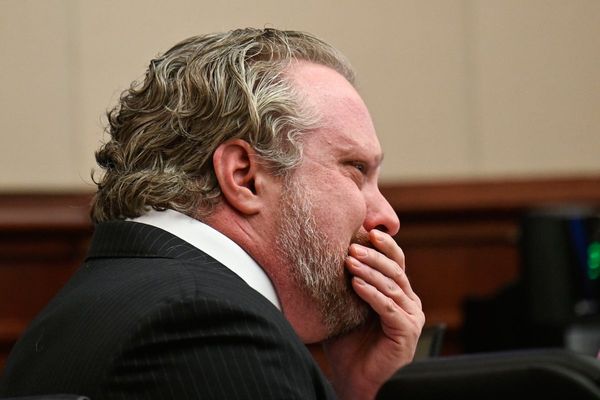

Treasurer Jim Chalmers has handed down the government’s ‘surprise‘ 2025-2026 Budget, marking his fourth budget and the final one before Australia heads to polls.
Going through the announcements, you can really see a policy platform emerge in the lead up to an election. (And, in case you were wondering, Opposition leader Peter Dutton is also slated to give the Coalition’s budget reply on Thursday).
Addressing cost-of-living and maintaining a strong economy are among the key priorities of this year’s budget, Chalmers said in his speech on Tuesday night, along with strengthening Medicare, building more homes, and investing in education.
So if you’re looking for a handy guide on everything that affects young Aussies (that’s you!) in the latest announcement — and what Labor is promising if elected — here’s what you need to know.
1) Further tax cuts
There will hopefully be more going into your pocket from next year through new “modest” tax cuts starting 1 July 2026.
With this, the 16 per cent tax rate that applies to taxable income between $18,201 and $45,000 will be reduced to 15 per cent. This will further dip to 14 per cent from 1 July, 2027.
What does it mean for you? Well, Aussies earning above $45,000 — i.e. 80 per cent of taxpayers, according to the government — could expect an extra tax cut of around $268 in 2026-27 and $536 from 2027-28.
Combined with the tax cuts previously announced, the new measures could see the average Australian on a wage of around $79,000 receive a total tax cut of $2,190 in 2027–28 compared to 2023–24 tax settings.
To find out how much the tax cuts will affect you, you can head over to the calculator on the Budget website.

2) Energy bill relief
Yup, the rebates from last year’s budget are set to continue in some form, meaning your electricity bills should benefit at least a little bit.
While it’s lesser than last year and will apply for around six months till 31 December this year, households can expect to see $150 in energy rebates automatically applied to their electricity bills in two quarterly instalments of $75 from July 1.
And no, it’s still not means-tested, meaning it applies for everyone (even the rich listers.)
3) Improving job mobility
Low-and-middle-income employees earning less than $175,000 a year could find moving to better paying jobs easier, starting 2027.
This is because the government is set to ban non-compete clauses, which affect around 20 per cent of Australians, and will now allow them to move freely to higher-paying gigs.
The reform could boost the wages of affected workers on median wages by some $2,500 per year, the government said.

4) More healthcare funding
Some of this was announced beforehand so it’s not entirely a surprise but there is a $784.6 million plan to ensure the maximum amount you need to pay for certain prescription medications will be $25 from January 1. There’s also $1.8 billion for new and affordable medicines to be added to the PBS.
There’s a $7.9 billion pledge over four years to boost Medicare funding i.e. the cost of seeing a GP should be one less worry on your mind. Under this, nine out of 10 GP visits should be free by 2030, and Medicare payments will rise depending on where you live.
There’s $792.9 million earmarked for women’s health, including cheaper contraceptives and endo treatment.
You should hopefully see better access to digital mental health services too, with $46 million set aside for nationally available services which are free or low-cost and do not require a referral.
5) Tackling student debt
In a bid to help young Aussies during a cost-of-living crisis, the government confirmed it would slash HECS-HELP debts by 20 per cent, meaning a graduate with an average debt of $27,600 would have approximately $5,520 removed from their loan.
They’ve committed to raising the minimum income threshold for repayments from $54,435 to $67,000. To spare you the math, the average person earning around $70,000 could be looking at savings of around $1,300 per year.

6) Rent and housing
The Help to Buy scheme — standing at some $6.3 billion — was announced last year for us broke baddies. With the goal of helping us snag our first home, it would see the government pitch in a hefty chunk of the purchase price.
It will now be expanded with newly increased property price and income caps, though this move is expected to support just 40,000 more Aussies hoping for home ownership.
In another move to take pressure off the housing market, there will also be a ban on foreign buyers for two years, starting 1 April 2025.
In terms of renters, those on Commonwealth Rent Assistance could also expect some benefits with the maximum rates increased by 45 per cent.
7) Addressing gender-based violence
There’s $21.4 million earmarked over three years to improve victim and survivor engagement in the justice system. It will also inform a broader response to the Australian Law Reform Commission’s (ALRC) Inquiry into the Justice System’s Response to Sexual Violence.
Additionally, the government will provide $8.9 million over three years from 2025–26 to improve and expand support services for vulnerable Australians. This includes those experiencing
housing insecurity and family, domestic and sexual violence.

8) Ex-Tropical Cyclone Alfred
We knew this was coming and the budget has provided more insight into the disaster recovery.
There’s $15 million set aside for ex-Tropical Cyclone Alfred recovery efforts and $13.5 billion towards natural disaster support more broadly.
9) Supermarkets
Last week, a Senate inquiry determined major supermarkets like Coles and Woolworths have ‘limited incentive’ to compete on price although it stopped short of noting any price gouging.
But the scrutiny continues, with the government set to boost funding to the competition watchdog by $38.8 million to crack down on misleading and deceptive pricing practices and unconscionable conduct in the supermarket and retail sector.
And if you’re extra curious about the budget papers, you can log on to the government’s 2025-26 budget website which has all the deets.
Lead image: Getty
The post Tax Cuts & Cheaper Healthcare: 9 Major Takeaways From The 2025 Federal Budget appeared first on PEDESTRIAN.TV .







